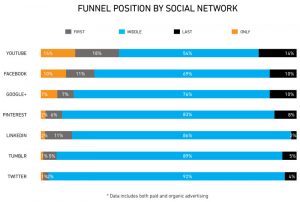By Mike Rucker

The pursuit of happiness is as old as consciousness itself, but the actual desire to be happy seems to be burning brighter than ever before, especially for young professionals. For example, Harvard’s “happiness” course is one of the most sought-out classes among its MBA students. Young entrepreneurs aren’t the only ones seeking happiness, however. High demand across all groups has given birth to a variety of apps and gadgets with the promise of improving our mental well-being.
While much of this emerging technology is built with good intentions, there is growing concern about whether or not many of these apps are truly helpful.
The idea of measuring and improving happiness didn’t start with tech. Psychologist Ed Diener invented the concept of “subjective well-being” in 1984 to gauge where someone’s respective happiness ranks against others. The construct of subjective well-being also provides a point on a scale used to see if any particular happiness intervention has an effect. To rank and scale happiness using technology, a person usually answers questions through an app or web page, and then the data are used to spit out a quantified measure.
Although the new range of “happiness tech” likely benefits some, the category isn’t without problems. Here are a few things to consider if you are thinking of using technology to improve your happiness.
Don’t lose joy to the pursuit of happiness
Technology can be a great way to support self-improvement and build healthy habits. However, a growing body of scientific evidence suggests that too much concern about happiness can be counterproductive. Researchers like Dr. Iris Mauss (University of California, Berkeley) have studied individuals who perseverate on happiness. The researchers’ conclusion: People overly concerned with their happiness often become depressed.
Daily push notifications, as well as metrics to compare your efforts against others, cause users to become fixated on why they are not good enough rather than spending energy on finding joy in the moment. Neuroscientist Sam Harris coined this pitfall “spiritual materialism” and removed the streak counter within his popular app, Waking Up: Guided Meditation.
The problem: Insights we derive through data can be counterproductive if they are not relevant to the behavior we are trying to improve. This occurs when they are served to us too frequently or do not do much to move us toward our goal. Dr. Jordan Etkin of Duke University has studied the folly of over-quantification. As Etkin explains, “People think the data is going to be valuable for them, and if they have easier access to the data, that alone will make things better. That is not always true, so it’s potentially a recipe for some really unhappy times.”
The solution: Make sure the app serves your needs and not the other way around. Turn off notifications and only concern yourself with the data that truly leads to betterment. Since happiness is a multifaceted construct, make sure whatever technology you invest in is well-aligned with the specific area you are trying to improve.
Be cautious of bad science
Most technology promising to make us happier is designed as consumer goods. These products are generally built to deliver on that promise earnestly, but product designers also realize they compete for our attention with the other apps on our phones. As such, many of these apps are designed with gamification engines. You may get a notification that says, “Hey, you did great this week. You met your twice-a-day gratitude goal. Next week, let’s make it three!” This architected pressure generally veers from the science the app was built on, and it can be harmful. It creates an artificial dichotomy between wanting to please the app and doing other activities that will likely make you happier. In the example above, overprescribing habitual gratitude can backfire, leaving the user less happy than when they started.
The problem: For happiness tech to be effective, the science behind the hood should be sound. Many mental wellness apps start with a good foundation but then get overengineered, the product team loses sight of the original science—or both.
The solution: If the app makes scientific claims, use Google Scholar to review the original research. If the product is not adhering to sound science, look elsewhere.
Find the right tool for the job
Although there is a lot to be mindful of when considering happiness tech, that doesn’t mean it can’t be helpful. Here are a few questions you can ask yourself to make sure whatever you choose is a good fit:
The problem: There’s a growing marketplace of technology purporting to help improve happiness, making it more challenging to determine what tool might be the right fit for you.
The solution: Make sure to try before you buy. Paths to happiness are as unique as we are, and no single app or device will work for everyone. Be mindful of return policies and trial periods so you can make an informed purchasing decision.
Happiness is not a hill to climb nor a game to win. If you want to use technology to improve your well-being, remember not to let technology get in your way of enjoying the journey.
Mike Rucker PhD is an organizational psychologist and behavioral scientist. He is the author of The Fun Habit.
(52)
Report Post







